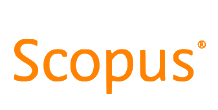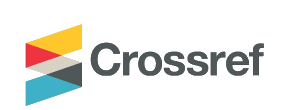Three perspectives on a collaborative, whole-of-program process of curriculum change: Aligning a Creative Arts program with Threshold Learning Outcomes
DOI:
https://doi.org/10.21153/jtlge2014vol5no1art567Keywords:
academic development, curriculum change, collaboration, employability, situated, Threshold Learning OutcomesAbstract
This qualitative case study reports on an emerging four-stage process of support for curriculum change using reflective data which highlights three perspectives: that of the Academic Developer, the Head of Program, and the Discipline Leader. The aim of the change process was to enhance employment outcomes of Creative Arts students by aligning the program curriculum with disciplinary Threshold Learning Outcomes. Successful features and areas for further attention are identified. The findings indicate that key features of the support process, such as its collaborative, situated, action-learning approach, have resulted in positive outcomes for participants. These include opportunities for reflective practice, peer and in situ learning as well as the development of participant engagement and leadership as part of the curriculum change process. Furthermore the process mirrored actions and emphasised concepts related to the employability of graduates of the program under review.
Metrics
References
Allen Consulting Group (2010). Employer demand for researchers in Australia. Canberra. Retrieved from http://www.industry.gov.au/research/ResearchWorkforceIssues/Documents/EmployerDemandforResearchersinAustraliareport.pdf.
Bernhard, A. (2012). Quality assurance in higher education. In A. Bernhard (Ed.), Quality assurance in an international higher education area: A case study approach and comparative analysis (pp.39–68). Germany: Springer Fachmedien Wiesbaden.
Biggs, J. (2003). Teaching for quality learning at university. Buckingham, UK: The Society for Research into Higher Education and Open University Press.
Boud, D. (1999). Situating academic development in professional work: Using peer learning. International Journal for Academic Development, 4(1), 3–10.
Boud, D. & Brew, A. (2013). Reconceptualising academic work as professional practice: Implications for academic development. International Journal for Academic Development, 18(3), 208–221.
Boud, D. & Middleton, H. (2003). Learning from others at work: Communities of practice and informal learning. Journal of Workplace Learning, 15(5), 194–202.
Chang, R., Wahr, F., De Pew, D., Gray, K., Jansz-Senn, A. & Radloff, A. (2004). Knowledge, wisdom and a holistic approach: A case study of change-management in academic development. Transforming Knowledge into Wisdom: Holistic Approaches to Teaching and Learning: Proceedings of the 27th Annual HERDSA Conference, Miri, Sarawak, Higher Education Research and Development Society of Australasia, Inc.
Desmond, B. & Jowitt, A. (2012). Stepping into the unknown: Dialogical experiential learning. Journal of Management Development, 31(3), 221–230.
Gray, K. & Radloff, A. (2006). Quality management of academic development work: Implementation issues and challenges. International Journal of Academic Development, 11 (2), 79–90.
Green, W., Hammer, S. & Star, C. (2009). Facing up to the challenge: Why is it so hard to develop graduate attributes? Higher Education Research and Development, 28 (1), 17–29.
Harris, K., Farrell, K., Bell, M., Devlin, M. & James, R. (2008). Peer review of teaching in Australian higher education: A handbook to support institutions in developing and embedding effective policies and practices. Report led by the Centre for the Study of Higher Education, Office of Learning and Teaching. Retrieved from http://www.cshe.unimelb.edu.au/research/teaching/docs/PeerReviewHandbook_eVersion.pdf.
Hubball, H. & Burt, H. (2004). An integrated approach to developing and implementing learning-centred curricula. International Journal for Academic Development, 9(1), 51–64.
Jasper, M.A. (2005). Using reflective writing within research. Journal of Research in Nursing, 10(3), 247–260.
Kirkpatrick, D. (1998). Evaluating training programs. New York: Berrett-Koehler.
Kolb, D. A., Boyatzis, R. E. & Mainemelis, C. (1999). Experiential learning theory: Previous research and new directions. In R.J. Sternberg & L.F. Zhang (Eds.), Perspectives on thinking, learning, and cognitive styles (pp. 227–247). Mahwah, NJ: Lawrence Erlbaum .
Land, R. (2001). Agency, context and change in academic development. International Journal for Academic Development, 6(1), 4–20.
Lave, J. & Wenger, E. (1991). Situated learning: Legitimate peripheral participation. Cambridge: Cambridge University Press.
Oliver, B., Jones, S., Ferns, S. & Tucker, B. (2007). Mapping curricula: Ensuring work-ready graduates by mapping course learning outcomes and higher order thinking skills. Paper presented at Evaluations and Assessment Conference, Brisbane. Retrieved from http://www.eac2007.qut.edu.au/proceedings_ebook.pdf
Plaza, C.M., Draugalis, J.R., Slack, M.K, Skrepnek, G.H. & Sauer, K.A. (2007). Curriculum mapping in program assessment and evaluation. American Journal of Pharmaceutical Education, 71(2), 1–8.
Prebble, T., Hargreaves, H., Leech, L., Naidoo, K., Suddaby, G. & Zepke, N. (2004). Impact of student support services and academic development programmes on student outcomes in undergraduate tertiary study: A synthesis of the research. Report to the Ministry of Education, New Zealand. Retrieved from http://www.educationcounts.govt.nz/publications/tertiary_education/5519
Sadler, D.R. (2005). Interpretations of criteria-based assessment and grading in higher education. Assessment and Evaluation in Higher Education, 30, 175–194.
Scott, G., Coates, H. & Anderson, M. (2008). Learning leaders in times of change: Academic leadership capabilities for Australian Higher Education. NSW: University of Western Sydney, ACER and Australian Learning and Teaching Council.
Sergiovanni, T.J. (1998). Organization, market and community as strategies for change: What works best for deep changes in schools. In A. Hargreaves, M. Fullan, A. Lieberman, & D. Hopkins (Eds), International handbook of educational change (pp.576–95). Boston, Mass: Kluwer Publishers.
Spencer, D., Riddle, M. & Knewstubb, B. (2012). Curriculum mapping to embed graduate attributes. Higher Education Research & Development, 31(2), 217–31.
Stake, R.E. (2004). Standards-based and responsive evaluation. Thousand Oaks CA: Sage Publications Ltd.
Sumsion, J. & Goodfellow, J. (2004). Identifying generic skills through curriculum mapping: A critical evaluation. Higher Education Research and Development, 23(3) 329–346.
Wenger, E. (2004). Knowledge is a donut: Shaping your knowledge strategy with communities of practice. Ivey Business Journal, January-February. Retrieved from http://www0.health.nsw.gov.au/resources/quality/knowledgemgt/pdf/doughnut.pdf.










